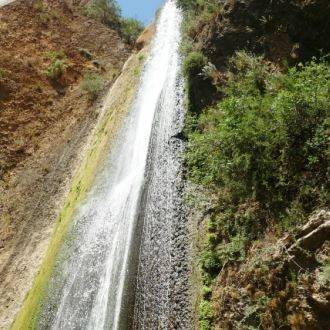Nimrod Fortress
Visit the remains of the Ayyubid
Major points of interest
The location of the fortress - at an elevation of about 760 meters, and surrounded by steep cliffs - commanded one of the most strategic points on the road leading from the Hula Valley and the Golan Heights towards Syria. The beautiful northern scenery can be viewed from every tower in the fortress.
The Baibars inscription - near the western gate, inside the fortress, is the largest and most imposing inscription ever found in Israel to date. Four lines, engraved on a stone six meters long, glorify the Sultan Baibars, in whose period the
main part of the fortress was constructed, other commanders and the date: 674 after the Hegira (1275 CE).
The south-western tower - an enormous 4-storey tower, that was expanded during the Mameluke period. The tower is of great importance because it defended the relatively vulnerable southern side. The tower is a wonderful lookout point to the whole southern wall.
The large cistern - north east of the south-western tower there is a large cistern into which rainwater flowed via a now-ruined system of channels.
The drinking fountain - located on the external wall at the southern side of the reservoir.
"The Beautiful Tower" - a very impressive seven-sided building. Due to its size, a clustered column was built at its center, from which the arches of the roof spread out to the walls of the building. The carving of the stones is on a very high standard.
The moat - a channel carved out of the rock, separating the fortress from its keep. The purpose of the moat was to protect the keep from enemy attack.
The keep - on the highest point in the castle is the keep, built as an independent fortress, with its own moat and wall. It provided a line of defense should the lower part of the castle be captured. There is a spectacular view from the top of the keep.
The northern tower - an imposing tower at the western end of the northern wall, built in 1230 CE. The well-preserved tower includes a hall with arrow slits in its walls, from which a staircase can be climbed to the roof. In the 15th century, the place apparently served as a prison.
The western gate - the stones of the arch over the gate moved in the earthquake that occurred in 1759 CE.
The secret passage - alongside the gate there is a large opening leading to a beautiful staircase leading to a secret passage, through which it is possible to leave the fortress without being discovered by the enemy outside.
The cistern - outside the fortress, on its eastern side, there is a water cistern measuring 26X54 meters, and 5 meters deep. Its location on a slope enabled the collection of rainwater that served the inhabitants of the castle.
Scenic Observation Posts
Observation post to the west from the top of the western tower - an impressive view of the Galilee, the Hula Valley and the northern settlements in the valley: Snir, Dan and Dafna, part of southern Lebanon and the Beaufort fortress.
The ridge of the Hills of Naftali can be seen beyond the Hula Valley. On the eastern slopes of the northern part of this ridge, is the city of Kiryat Shmona, and at its northernmost end are the settlements of Manara, Margaliyot and Misgav Am. Looking towards the north and north-east, the entire range of Mt. Hermon can be seen: the "Shoulder" of Hermon, the Shiryon extension and the Si'on shoulder.
The keep - this tower is higher than the other parts of the fortress. From here it is possible to look out towards Mt. Hermon, the nearby village of En Kinya and the western edges of the Golan Heights. At the south-western side of the Golan it is even possible to identify the Tel Faher post, located close to the Oil Road. To the south can be seen the eastern Upper Galilee and the Hula Valley.
The northern tower - from this lookout post towards the north-west the border between Israel and southern Lebabon can be seen, the village of Kfar Rajar located on the edge of the cliff of the Hatsbani river, the Beaufort fortress on the Hermon ridge and Har Dov.
- Type
- Hiking
- Region
- North
- Near to
- Majdal Shams
- Length
- Half a kilometer
- Duration
- 1-3 hours
- Recommended season
- Spring, Summer, Autumn, Winter
- Difficulty level
- Easy
- Starting point
- Nimrod Fortress (map)
- Ending point
- Nimrod Fortress (map)
- Special equipment
- Water, hat, walking shoes
- Precautions
- Do not stray from the paved path
- Parking
- Parking
- Accessibility
- Accessible
- Circular
- Circular
- Drinkable water
- Drinkable water
- Suitable for children
- Suitable for children
- Picnic suitable
- Picnic suitable
- Phone
- +972-4-6850664
Similar trails

Accessible route between charming rivulets



Nearby attractions







Nearby restaurants






Mcdonalds- North Park, Maayan Baruch




